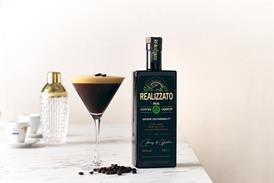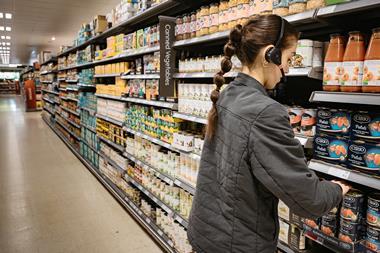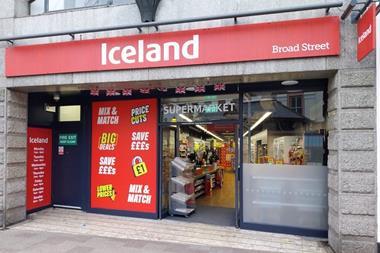The Top 50 posted a whacking 35% hike in profits last year. But that doesn’t mean they’re all in rude health – or that the recent flurry of deals signals a new wave of M&A activity
Deal or no deal? After three years of virtually no mergers and acquisitions in The Top 50, there has suddenly been a flurry of activity.
In November, Spar retailer and Top 50 stalwart Botterills Convenience Stores was acquired by Scotmid Co-op. Less than a month later, c-store and CTN chain Mills Group was controversially acquired by Tesco’s convenience chain One Stop. The acquisitions were the first for the Top 50 since United News Shops was acquired by WHSmith in 2008.
And they weren’t one-offs. Just this week, it emerged that Capper & Co was in merger talks, which leaves a question mark over the future of its store division Waynes Foods, and that MRH Retail’s parent company MRH (GB) had sold Pace Fuelcare to Irish energy group DCC.
Speculation is now mounting that we’re about to see a new wave of merger and acquisition activity in the sector. But are we? On the face of it, The Grocer’s eighth annual ranking of the 50 biggest independent grocery retailers would seem to show this hugely diverse sector thriving in adversity. Turnover has risen 10% to £7.7bn, with pre-tax profits up a massive 35% and a profit margin up from 2.4% last year to 3%. Store numbers have also increased, by a healthy 11%.
It’s a sector full of attractive targets, believe many experts. “We do see acquisitions returning to the landscape and The Top 50 is a good showcase but can also act as a shopping list,” says one senior industry figure. “I think most in the independent sector do see it as that.”
The predators are as likely to come from outside as within, adds another source, citing the return of apex predator Tesco, whose acquisition of Mills was the first Top 50 deal it had done since secretly purchasing Brian Ford’s Discount Stores in 2003.
There have also been suggestions that The Co-op Group’s ongoing struggle to absorb Somerfield will turn it into a seller rather than buyer.
But it’s worth remembering that the group is only one part of the wider co-op movement and that, of the 33 independent players snapped up by larger players since the Top 50 began in 2002, 14 of these have been by that movement. One indie supermarket operator is confident it will be on the acquisition trail again this year. “The Co-op is very aggressive and seems to use the list to work out who it can target next,” he says.
Who’s that likely to be, though? Buying a retailer with unfulfilled potential is one thing, flogging a dead horse quite another. Many would-be targets are simply not attractive enough, claim some experts. They note that if you strip out the eight discounters from the Top 50, profit margins plummet from 3% to just 1.5%, while sales would be up only 4% and profits 20%.
The discounters are the driving force in the Top 50, they argue, and the figures back this up. Wilkinson, at number one, has upped sales by 7% and pre-tax profits by a massive 120% in the past year. Its profit of £64.9m is bigger than the turnover of 23 of the Top 50 indies and its £1.5bn turnover makes up a fifth of the list’s £7.7bn total.
B&M Retail has also grown considerably, leapfrogging rival TJ Morris to break into the top three with a 30% increase in sales. 99p Stores managed a 43% increase, propelling it into the top 10 after continuing its relentless store opening programme.
Conversely, the supermarkets have posted just a 1% increase in turnover, while profits have nosedived 35%. CTNs have also been hit hard as larger operators muscle in on confectionery with prices they simply can’t match. “Discounters have been the biggest threat to our business in 2010,” admits Maynews MD Tony Wright.
Mike Colley, MD of Rippleglen, the company he acquired last month as part of a vendor-assisted MBO, is even more scathing. “The major confectionery manufacturers have supplied pound shops and discounters with multipacks not available to the CTN channel,” he claims. “This has resulted in loss of trade in our sector and a significant market shift that’s moved the brand proposition in many consumers’ eyes, with possible irrevocable damage.”
Colley plans to ride out the storm by moving into the c-store sector with an, as yet unnamed, symbol fascia.
Maynews plans to expand its offer. “It’s our intention to compete with high-street discounters,” says Wright. “Hopefully we will acquire new CTNs in 2011 and gain extra business through new services, getting into Poundzone products and moving into off-licence.”
Other Top 50 players will look to shore up their interests through consolidation, predicts Christie & Co. And they won’t just be looking to other players in the sector. With both Murco and Total UK up for sale, Top 50 forecourt operators could well scent opportunity, although they would face competition from overseas investors and question marks have to be raised as to how attractive these assets are, given both have been on the market for some time.
Other Top 50 retailers will hope to emulate the success of the eight companies on the list that have reported double-digit increases in store numbers in the past year thanks to the demise of both Woolworths and Threshers owner First Quench Retailing. The companies collapsed two years ago, but it was in 2010 that the sector really started to reap the benefits from their demise.
R&M Swaine, at 26, led the charge, picking up 34 Threshers and growing 111%, B&M Retail, at three, grew its estate 53% after picking up 45 Woolies and 36 Opus Homewares, while Harry Tuffins, at 32, increased store numbers 43% after buying former Somerfields. Some experts believe there will be another Somerfield fire sale by The Co-op Group this year.
Among retailers expected to join the Top 50 next year when they file their first accounts is Haldanes, set up last year after acquiring a clutch of Somerfields. Now it has snapped up 20 Nettos to form discount chain Ugo, it could feature prominently.
It seems to have picked the winning ticket by going down the discounter route. Operations director Richard Collins is confident that Ugo’s strategy of stocking the products “forgotten” by the multiples but still held in high regard by older generations, such as tinned meat, fish and veg, will pay off.
“Ugo will be Netto but with the missing links,” he says. “We’ll let our customers pay with credit cards from day one. We’ll also sell tobacco and have ATMs in all stores. At the moment, there’s only one ATM in the 20 stores we bought. There are also opportunities for consumer credit. Brighthouse has been very successful with consumer credit so why can’t we?”
Innovation is key, agree existing Top 50 operators and could rejuvenate the fortunes of even the sub-sectors that appear to be most in peril. Ninth-placed Euro Garages saw a dip in pre-tax profits but believes its rapid expansion through acquiring sites the multiples don’t want will reap rewards. “We redevelop underperforming sites in high-density locations, optimising fuel volumes and driving additional revenue by offering convenience retail and ancillary services,” says FD Martin Ashcroft.
Spar retailer Henderson Retail takes a similar line . “We continue to invest in our company-owned estate and co-invest with our petrol partners,” says FD Ron Whitten. “Investment of £10m is expected in 2011 to help us to continue to develop the quality of our offer. Growth in own-brand and value ranges continues to outperform other departments. Ongoing work to ensure ‘best-in-class’ customer service remains paramount.”
Another retailer upping its investment in forecourts this year is MRH Retail. “We continue to invest in our shops, using our own template Park & Shop or Spar where the symbol offer will present value to us and our customers,” says its operations director, Miles Harvey.
“We are also looking to expand as oil companies continue to sell their retail estate off.”
Others in the Top 50, however, prefer to expand organically. Northern supermarket chain Booths, at 10, opened a new-build store last November and is following this up with two new stores, in Salford’s Media City and Penrith, later this year.
Whether through acquisition or organic growth, many will be looking to fight their corner through expansion. Others will simply try to do what they do now but better. And there will be some that just want to become attractive enough to find a buyer. With the discounters so dominant and the likes of Tesco sniffing around, it promises to be another year full of challenges and opportunities for the Top 50.
C-stores
Number: 10
Turnover: up 4%
Pre-tax profits: down 12%
Margins: 1.9%
C-stores are the mainstay of the Top 50 and, despite losing big hitters Mills Group and Botterills, the remaining 10 had a respectable 2010. Spar retailer Gillett’s and J&J Wilson, which runs Costcutter stores in holiday parks, reported double-digit sales increases, but five companies reported a fall in profits. “Like-for-like growth has been challenging as disposable incomes come under pressure,” says Henderson Retail FD Ron Whitten. “Own-brand and value ranges continue to outperform other categories and a greater focus on fresh and local is important to differentiate us from the multiples encroaching on the sector.”
CTNs
Number: 3
Turnover: down 3%
Pre-tax profits: N/A
Margins: 0.4%
Confectionery and tobacco sales are buoyant. So why are CTNs struggling? The sector remains the worst-performing in the Top 50, with store numbers down 2% and staff numbers 9%. The only good news came from GT News, which upped profits after a store reorganisation programme. Newspaper and magazine sales are seemingly in terminal decline, but operators believe the real reason for the sector’s woes is that consumers want one-stop shops - which is why Rippleglen plans to launch a c-store offer this year, while Maynews is considering an off-licence and discount range.
Discounters
Number: 8
Turnover: up 19%
Pre-tax profits: up 47%
Margins: 4.1%
The discounters continue to expand at breathtaking pace. The sector dominates the Top 50, boasting five of the top six retailers. As well as posting strong profit and sales growth, the discounters also boosted the size of their estates (B&M Retail growing 53% and Heron Foods 20%). But they might not have it all their own way this year. With the 2.5% VAT hike, margins are being squeezed and retailers have had to forge deals with suppliers to reduce pack sizes and protect margins. 99p Stores is also trying to stay one step ahead with the launch of Family Bargains, freeing it from its fixed price point.
Forecourts
Number: 8
Turnover: up 1%
Pre-tax profits: up 69%
Margins: 1.4%
Forecourt operators face uncertain times. With the major oil companies shifting their attention from fuel retailing to R&D and Total UK and Murco for sale 1,200 sites are up for grabs. But despite the tough trading environment, operators are bullish especially Euro Garages, which now boasts fomer Asda boss Andy Bond as its non-executive chairman. “Accelerated investment in forecourts is driving total owned sites sales up 23% to £350m,” says FD Martin Ashcroft. “We have raisedsignificant funding to take part in ongoing sector consolidation and are looking to acquire around 40 sites in the next year.”
Off-licences
Number: 8
Turnover: up 12%
Pre-tax profits: N/A
Margins: 2.2%
Reports of the off licence sector’s demise may not have been greatly exaggerated but some operators are still hanging on in there. The eight in our Top 50 have upped sales by 12% in the past year and store numbers by 16%. Rhythm & Booze operator R&M Swaine and Sussex-based M&O Trading, which trades as Mulberrys, both picked up former Threshers stores. Wineflair has also expanded and G101 is about to. “We are at present building a development in Glasgow purpose-built and recommended by Glasgow City Council which should be ready in April,” says director Natalie King.
Supermarkets
Number: 9
Turnover: up 1%
Pre-tax profits: down 35%
Margins: 1.8%
Indie supermarkets had a renaissance in 2009, but it was short-lived. Their sales uplift has shrunk from 5% to just 1%, while a 2% rise in profits has turned into an alarming 35% slump (although only four of the nine supermarkets in The Top 50 provided profit figures). Expansion has also stalled with only three increasing their estates in 2010 after a bumper year in 2009 when many bought former Somerfields. Stans Superstore, at number 47, is the only single store outfit left, but it is planning to open a second store in Llangollen later this year, following a lengthy planning battle.



















No comments yet